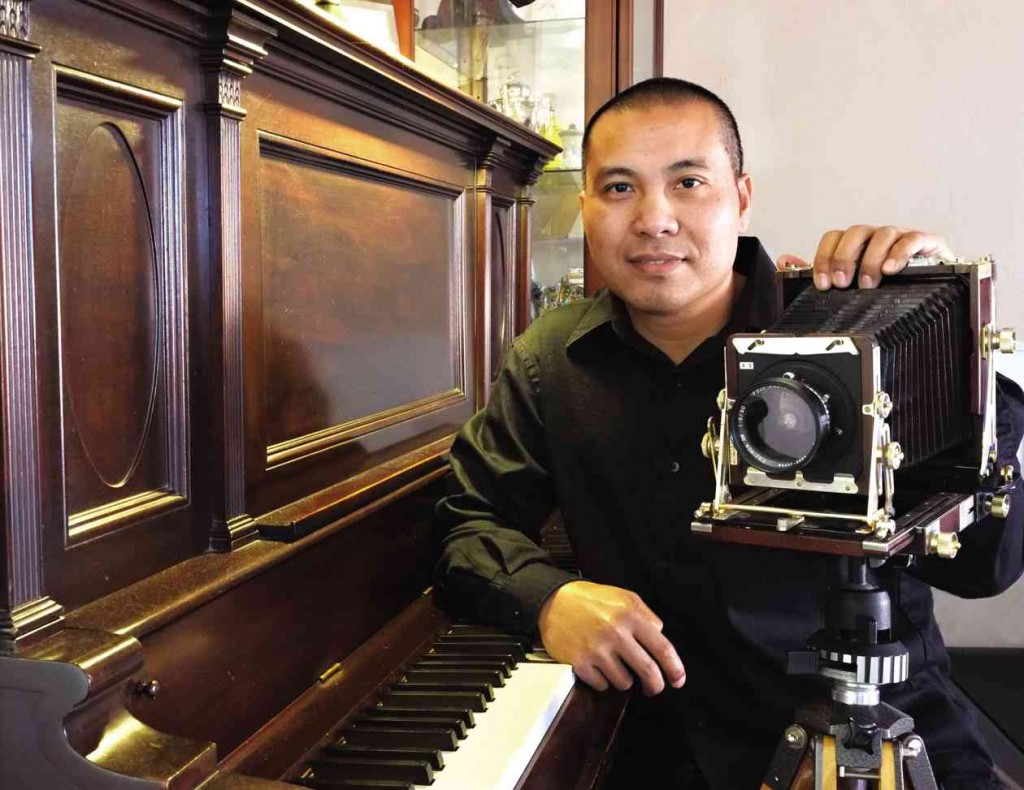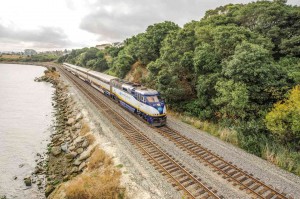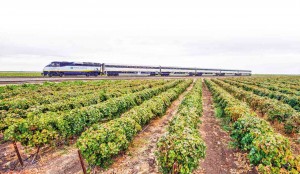Pinoy lensman captures Amtrak with just a click

VINTAGE APPRECIATION Jeremiah Nueve with his vintage Tachihara large format camera, which he uses for black and white photos.
“It was a very stiff competition. I competed with established and professional photographers but my enthusiasm toward the project landed me the job,” Jeremiah Nueve, 39, an engineer, says on the photography sessions for Amtrak last November.
Amtrak is a publicly funded railroad service, which provides intercity passenger train service in the United States.
The project that opens more opportunities for him did not come in just a click. It took him years and quite a fortune to improve his craft that keeps his sanity.
Nueve is also one of the few photographers who shoots using vintage cameras and 36mm films.
US Air Force to photography
In 1989, Nueve was sent by his parents to study in the US. When he acquired citizenship, he served at the US Air Force (USAF) from 2002 to 2006. It was the height of the war on terrorism of the Bush administration.

MOVING ALONG An Amtrak train in San Joaquin Valley, California. COURTESY OF JEREMIAH NUEVE FOR AMTRAK
“I started photography in 2004 while serving in the USAF as a stress reliever. I worked 12 hours daily and by the time weekend came, I was mentally and physically drained. It was during this time that I searched for something to keep me sane. Photography came into the picture,” he recalls.
Those years were tension-filled. Instead of being deployed to the Middle East, their squadron was given the responsibility of protecting the eastern side of the US.
“Our jets were ready, fully loaded with ammunition in case another terrorist attacks US soil,” he says. While in the Air Force, he pursued his education and finished BS Aeronautics.
“No one influenced me on photography. Though I was into oil painting for a while which sold a few copies, I just wanted to expand my artistry into other media,” he says.
Started with a 1972 Leica
After some years of taking photos both for a sideline and as a hobby, Nueve says his passion waned for a while. He searched for something new to bring the spark again.
“Most people are introduced to photography with a film camera first. Since I have never taken any formal classes, I thought this would be a perfect opportunity to learn it from the basic. I picked up a 1972 Leica camera and instantly fell in love with the full manual features of the older camera,” he explains.
Unlike the digital camera which is easier to program the lightings, an old camera’s autofocus and light metering have to be performed manually. He enrolled in a class on how to develop film.
“Vintage cameras are not only an attention grabber but I like how the images turn out. The older lenses have a different color rendering than the new digital cameras. Every time I use one of my vintage cameras, it teaches me to slow down and enjoy the moment,” he says.
Landscapes are his usual subjects because he says, he is more at ease when not dealing personally with people.
Amtrak and more
Coincidentally, during the time that Nueve was rediscovering his passion for photography, the Amtrak project came. His former client in photography recommended him to Amtrak. He submitted his still-life photos and bid proposal since it was a government project.
He was chosen unanimously by the management besting professional photographers in the US. It was a monthlong project but it took him only three weeks to complete which impressed them more.
“Working for Amtrak was a remarkable experience as I have never taken that train prior to the project. I had a blast that it didn’t feel like a job but more of an adventure. I enjoyed meeting and conversing with locals, learned different ways of life from different regions of California, and visited places that I probably would not have if it wasn’t for the project,” he says.
The Amtrak project was financially rewarding, but for Nueve, it was more on the recognition and appreciation of his talent.

CONNECTING US CITIES An Amtrak train chugs away amid a a vineyard at San Joaquin Valley, California.
Besides Amtrak, he is also the company photographer of his employer, Varian Medical Systems. He has done photography sessions for the executives of Huawei and Tri-City Health. He is also doing free photo sessions for churches and charitable organizations.
In the last board of directors’ meeting of Amtrak, other government transportation agencies expressed their enthusiasm for a possibility of future collaboration with Nueve on some projects. But for Nueve, he would like photography to remain as a part-time serious hobby.
“The beauty of having a full-time job is that I can pick and choose the photo projects I would like to engage in. I would like to focus on quality rather than quantity of photo projects. I create better images when I enjoy the work,” he says.
Being a Filipino
When Nueve was starting in photography, he would go out on photo walks with other photographers, usually Americans.
Most did not share the tricks or help new photographers like him. So he studied and learned on his own.
For the last four years, he mentors neophyte photographers and teaches them tips and techniques of photography.
“One of these individuals opened her own studio. To this day she credits me for introducing the art to her,” he shares.
Photography is a means to express one’s appreciation of life, according to Nueve. He believes that a photographer helps us reconnect to reality by capturing and documenting the beauty, joy, sadness and love surrounding us. Being a Filipino and a migrant also give him an advantage in understanding the details of still life and life itself.
“I have covered Indian, Asian, Haitian and Hispanic events and I was able to fit in easily due to the common background we share of being minorities,” he shares.
For the aspiring photographers, his advise is not to worry so much about the type of camera you use but just be out there, enjoy and capture each moment.
Try something different until you find what your genre is. Practice, share them with others and most importantly have fun.